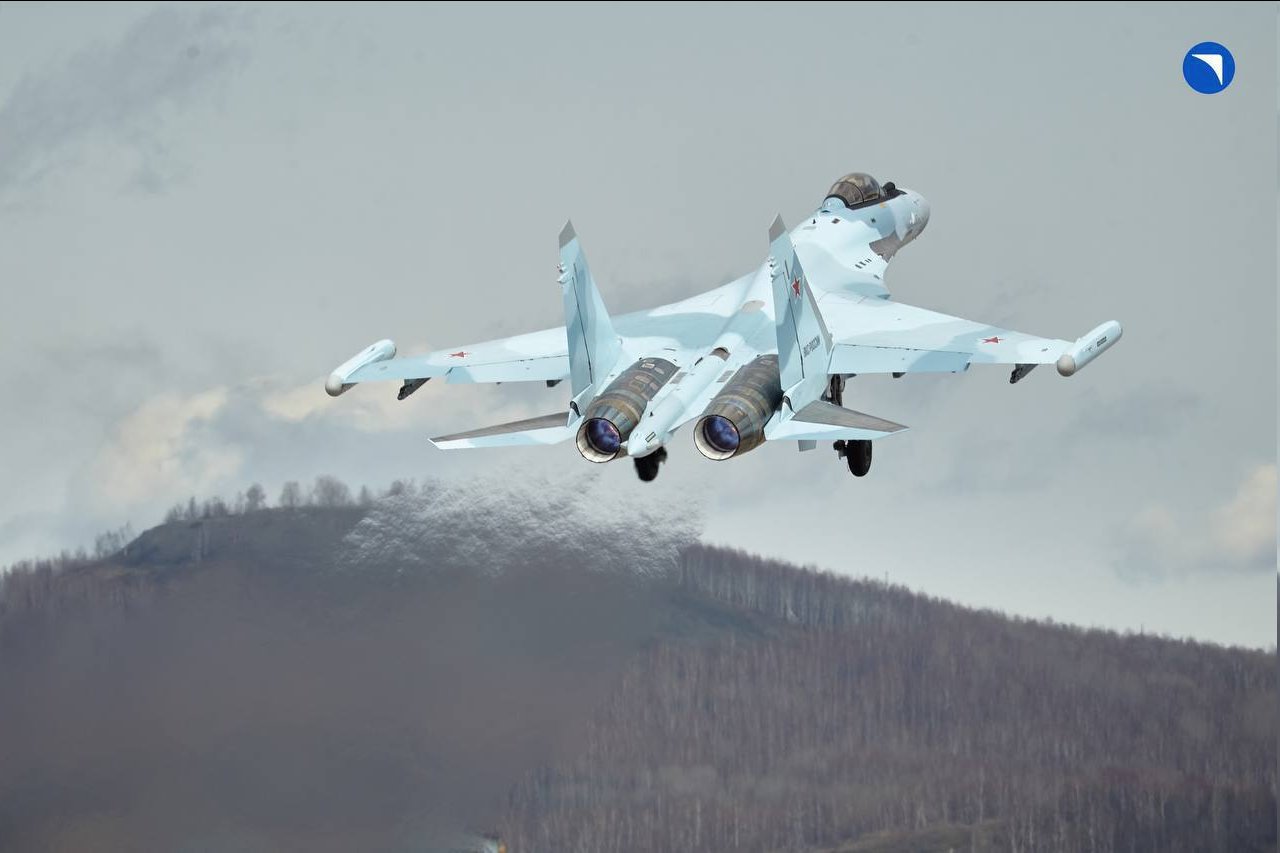Project Corvus, who will enter the fray?
The British Army publicly initiated Project Corvus to replace its Watchkeeper UAVs in mid-April 2025 expecting initial responses by the end of the month. The project is a significant and important one for the British forces having adopted a 20-40-40 doctrine. According to the Times, this will see 20% of the Army’s combat power made up of traditional land platforms, things like Challenger 3, Boxer, and Ajax. Another 40% will be provided by long-range strike systems including loitering munitions and artillery, the remaining 40% will come from more expensive reusable drones like the MQ-9, and presumably whatever platform is selected under Project Corvus.
The concept is certainly pleasing if you like tidiness and order, but the relevance of Corvus lies in the second 40% – the use of loitering munitions, drones, and artillery to degrade and attrit an opponent before committing the armour. This is eminently sensible; Russian anti-tank guided missile (ATGM) teams proved devastating against Ukraine’s armoured advances during the 2023 counter-offensive, especially when operating from behind dense minefields. Attacking them and their logistics routes with artillery and loitering munitions before committing to an armoured offensive makes perfect sense as it would preserve manpower and equipment. This in turn would enable the UK’s limited armoured forces to go further, possibly facing second echelon forces in a more complete state than would be the case if they had fought through the first echelon with their organic combat power.
But the ability to do this successfully will rely entirely on the UK’s ability to resource its intelligence, surveillance, target acquisition and reconnaissance (ISTAR) pipeline in support of its long-range strike. At the moment, the strike assets include the upgraded M270 multiple launch rocket systems, Archer 155 mm howitzers, which will be bolstered by the RCH155 eventually, and some ground-based ATGMs. In the air, the Army can deploy AH-64E Apaches and call potentially upon MQ-9A Reaper remotely piloted aircraft from the RAF for support in ground strikes. Although, there are notable concerns around the survivability and utility of both platform types. This puts the British Army’s furthest reach with land-based systems with present ammunition at 90 km, the extended range GMLRS round will increase that to 150 km. This is a long way; imagine that a MLRS launcher is 30 km behind the forward line of friendly troops, to maximally exploit the full range of the extended range GMLRS, an ISTAR platform would have to fly over as much as 120 km of enemy held territory. In Russia’s case, this would likely involve flying over a lot of short-range air defence systems and electronic warfare platforms designed to bring drones down. But without this reconnaissance capability, the UK will be unable to find targets to engage, and its armoured forces will likely face a more intact adversary than they would like.
So, this is the context for Project Corvus, and why it is such an important requirement. Fortunately for the UK, the market of drone providers has expanded significantly since it first brought Watchkeeper into service. The goal of this article is to provide a market overview, profiling the platforms and companies that could meet the UK’s requirements. One thing to note is that it is common for teams to form around a given platform. This is because a company might have one element – the drone – but not the others, like a radar. This piece will focus only on the drones and their manufacturers.
Project Corvus: Requirements shape capability
It is worth remembering the key requirements that have been made public for Corvus, that will shape the systems included below.
- The system must be capable of conducting ISTAR in support of the “corps and divisional deep battlespace.” This likely means up to 150 km in range.
- The system needs to conduct persistent and wide-area ISTAR by accurately detecting, recognizing, identifying, tracking, and designating land and maritime targets in real-time using cooperative payloads.
- The system must be able to securely communicate and disseminate ISTAR information and platform data with low latency, integrating with existing processing and exploitation systems.
- The system is expected to operate robustly in contested airspace and GPS-denied environments, with particular challenges in resisting kinetic interception in contested airspace.
- It should be quickly deployable and not require an expansion of 47 Regiment’s existing workforce.
- The system is required to be technologically agile, supporting spiral upgrades and developments through a software-defined capability.
- Finally, the system must meet the UK’s Land Industrial Strategy Objectives Framework, which typically mandates a certain percentage of UK-based manufacturing.
Other elements that are likely to play a role include continuation of the capabilities that are already integrated into Watchkeeper. It can carry the Thales I-Master radar, for instance, which can conduct reconnaissance using synthetic aperture radar as well as a ground moving target indicator, which provides warning of vehicles on the move. This would likely shape the payload that the selected system will have to accommodate, and in turn its take-off and recovery requirements. A heavier drone will typically require a runway, for example, whereas lighter ones can be catapult launched or take off and land vertically.
Potential competitors
Avinc
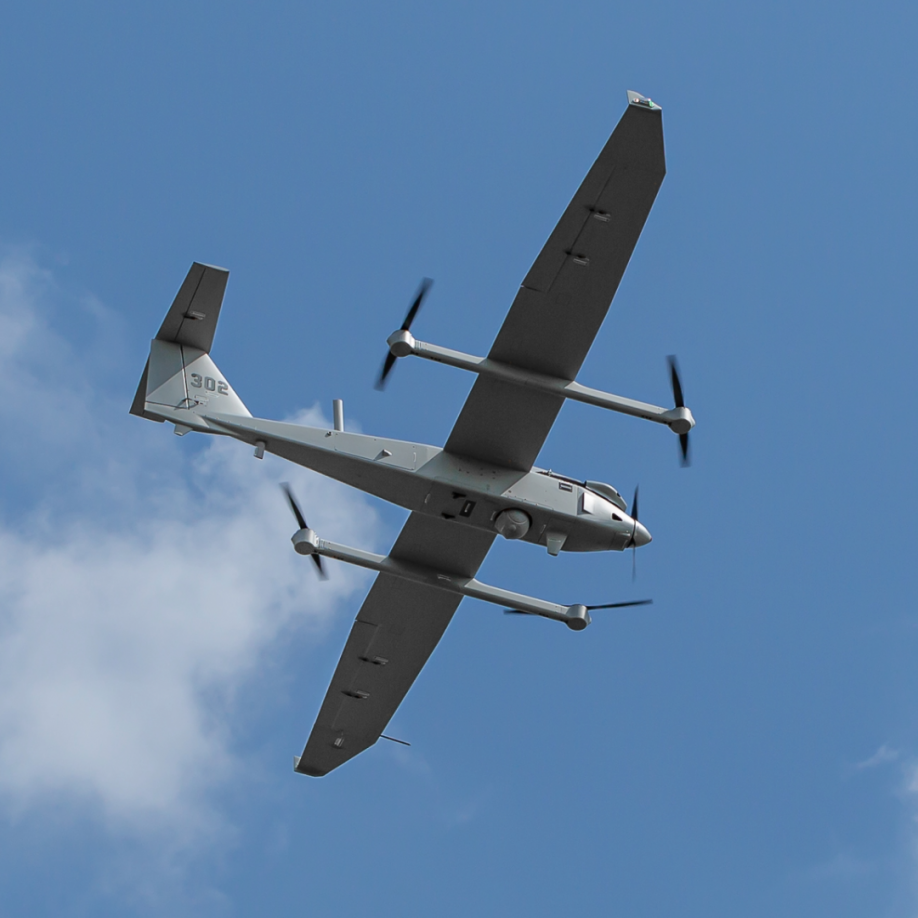
The Jump-20 vertical take-off and landing (VTOL) UAS shown here could be a competitor for Project Corvus, and it is gaining more widespread adoption for similar requirements. Credit: Avinc
Drone: Jump 20/T-20
Description: Avinc offers two drones that could meet the requirements for Project Corvus: Jump 20 is an e-VTOL fixed wing aircraft while the T-20 is more of a conventional fixed wing asset with a greater payload and endurance. Both are powered by liquid-fuelled engines and include GPS and comms links that are described as “hardenable.”
Range: 185 km
Altitude: 5,000 metres/6,000 metres
Endurance: 13 hours/24 hours
Weight: 97.5 kg including fuel and payload/102 kg
Payload: 13.6 kg, can carry thermal imaging cameras, laser designators, and SAR. T-20 payload increased to 22 kg with the T-20.
Launch/Recovery: The Jump 20 is configured for vertical take-off and landing, the T-20 is catapult launched. The T-20 is described as runway independent and catapult-launched, it can be recovered by a skid landing.
Users: US Army, Denmark, and Ukraine. Ordered by Italy.
Company brief: Avinc was formed by the merger of AeroVironment (AV) and BlueHalo in May 2025. Avinc builds on AVs track record of uncrewed systems including the Switchblade family and Jump 20. BlueHalo specialises in counter-UAS capabilities as well as HaloSwarm, a swarming technology for autonomous systems.
Elbit Systems UK

The SkyLark 3 from Elbit Systems could be entered into Project Corvus, or the company could run with another capability altogether. Credit: Elbit Systems
Drone: Skylark 3
Description: Skylark 3 is a catapult launched fixed wing drone designed for divisional, brigade and battalion level reconnaissance according to Elbit. It does not meet all of the likely requirements for Corvus that have been estimated for this article. Most notably the assessed range. However, this could be revised down depending on the feedback that the Army receives.
Range: 100 km
Altitude: 5,000 metres
Endurance: five hours
Weight: 48 kg
Payload: EO/IR, ELINT, and COMINT. Weight unknown.
Launch/Recovery: Catapult launched with autonomous take-off and landing.
Users: Stated to be in use with 30 nations.
Company brief: Elbit Systems has a long heritage in the design and supply of UAS for long-range and persistent ISTAR. However, its Hermes 450 was the base platform for what became Watchkeeper, which may not have a favourable impact if it chooses to enter the competition for Project Corvus.
IAI
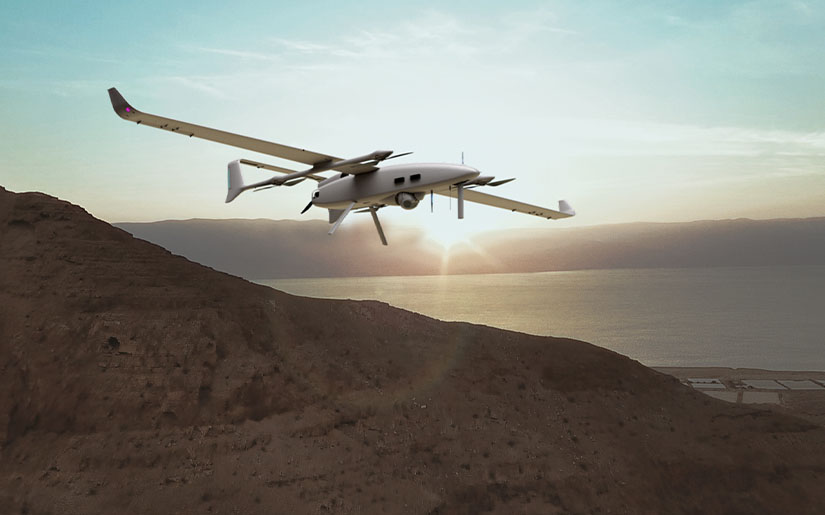
The Thunder-B VTOL UAS from IAI with the company’s pedigree in drone production, could be a strong competitor for Project Corvus. Credit: IAI
Drone: Thunder B-VTOL
Description: The Thunder B-VTOL from IAI may not fit all of the requirements for Project Corvus. It is a hybrid power VTOL drone designed with a high degree of autonomy to improve resilience to jamming and GNSS denial.
Range: 150 km
Altitude: 8,000 metres
Endurance: 12 hours
Weight: 40 kg
Payload: 8 kg, EO/IR
Launch/Recovery: VTOL
Users: Morocco, Colombia
Company brief: IAI has a long heritage in UAS development and deployment. Its Thunder B-VTOL represents an attempt to provide the capabilities normally associated with much larger platforms in a smaller footprint. It could also offer the Heron, which is much, much larger at a total weight of 600 kg. The Thunder B-VTOL is built for use in comms and GNSS-denied environments.
Sky Drones
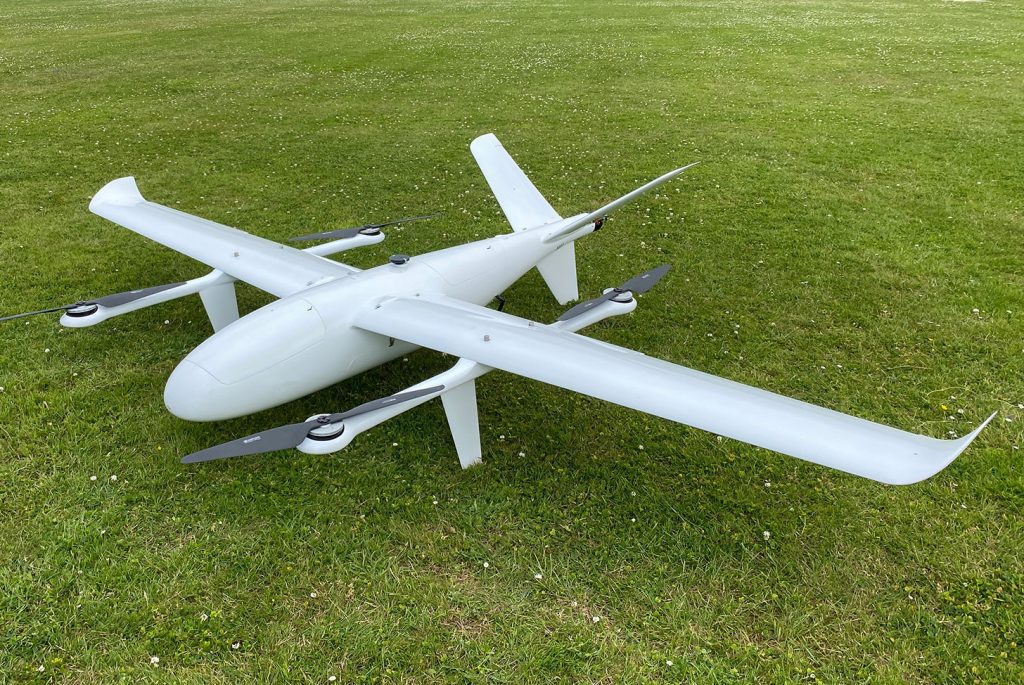
The SkyLane 350 UAS shown here would be unlikely to meet the requirements of Project Corvus as interpreted. But its larger variant, the Sky Lane 510 and the 700 could. Credit: Sky Drones
Drone: SkyLane 510/700
Description: Sky Drones offers a large family of uncrewed aircraft designed to conduct reconnaissance and other duties in both the military and civil worlds. Its aircraft are all electrically powered, which reduces noise but does seem to impact endurance. The larger drones use a hybrid design with a regular engine and electrical power. There are two that could meet the threshold for Corvus; the SkyLane 510 and SkyLane 700, the numbers refer to the wingspan in cm.
Range: Sky Drones state its systems have a range up to 1,300 km. Which likely refers to the SkyLane 700.
Altitude: 5,000 metres, max.
Endurance: SkyLane 510 provides a five hour endurance with a 20 kg payload. SkyLane 700 is a nine hour endurance with a 50 kg payload.
Weight: 100 kg/200 kg
Payload: 45 kg and 50 kg, can carry EO/IR suites and is built with AI operating at the edge to provide object detection and tracking as well as computer vision based navigation in GNSS denied environments.
Launch/Recovery: VTOL
Users: Understood to be in service in the UK and US, but the drone type is unclear. Sky Drones reports over 5,000 users worldwide.
Company brief: Sky Drones is a British company and much of its hardware – with the exception it seems of the EO/IR suites – is manufactured in the UK, as is the software used on its platforms. The company has established relationships with other industry partners including Helsing and Anduril.
Tekever
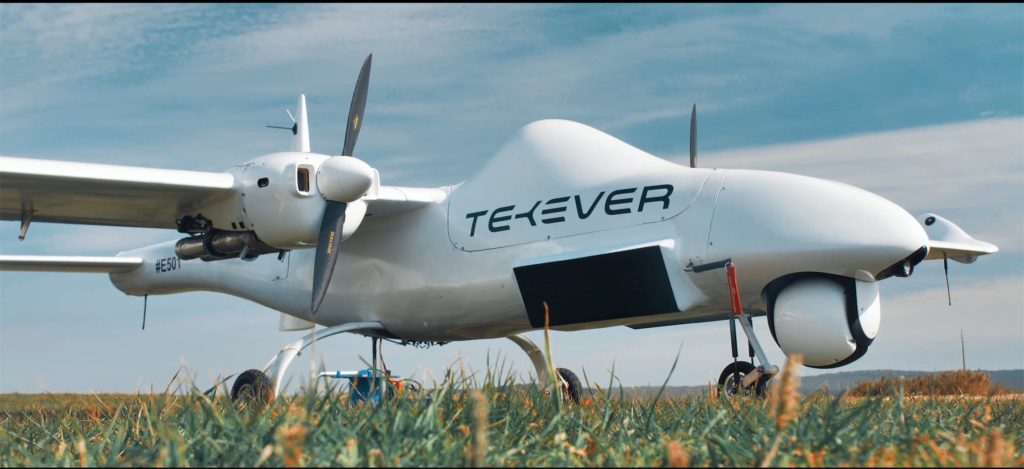
The AR5 from Tekever could meet the requirements of Project Corvus. Credit: Tekever
Drone: AR5
Description: The AR5 is the largest uncrewed platform offered by Tekever and follows a conventional fixed wing design with some modifications for austere landings. It is touted as a maritime surveillance aircraft, but could perform several roles.
Range: Over 1,000 km. Comms range is stated to be unlimited using SatCom.
Altitude: Unknown
Endurance: 20 hours
Weight: 180 kg max
Payload: 50 kg, which can include sonobuoys from Ultra Maritime, SAR, and EO/IR.
Launch/Recovery: Automated take-off and landing from short, unpaved runways.
Users: Portugal, Ukraine, UK (Home Office), European Maritime Security Agency.
Company brief: Tekever is headquartered in Portugal and has a production facility in Wales. It recently announced a £400 million ($500 million/€468 million) investment in the UK as part of its five-year UK development program, which it refers to as OVERMATCH. The company has supplied its AR3 drone to Ukraine where it has clocked up 10,000 hours of operation and reached up to 300 km behind the frontlines, according to Tekever. The AR3 may also be suitable for Project Corvus if this is correct, as it is also the host system for the RAF’s StormShroud capability, but its specifications on the company website show a range of 100 km.
Thinking outside of the box
Most of the systems outlined above are relatively well-known and operationally proven. However, there may be benefits in the UK considering options outside of the established players. One of them to consider is Ukrspecsystems from Ukraine. There are many others, of course; the UAE’s Edge Group has VTOL UAV capabilities that might fit the bill, and others like Quantum Systems could offer capable UAVs if the range requirement is less than estimated here. A short profile for the Ukrspecsystems and Edge systems are provided below.
Edge
Drone: PhantomHawk
Description: A fixed wing and VTOL ISR platform designed to provide long-endurance and edge AI capabilities.
Range: 150 km +
Altitude: 3,600 metres
Endurance: 12 hours with 3.5 kg payload.
Weight: 32 kg
Payload: 7 kg, likely EO/IR.
Launch/Recovery: VTOL
Users: Unclear
Company brief: The Edge Group was established in 2019 and has expanded rapidly to include different clusters that provide a range of capabilities. It is building its presence in the field of autonomous systems and loitering munitions.
Ukrspecsystems
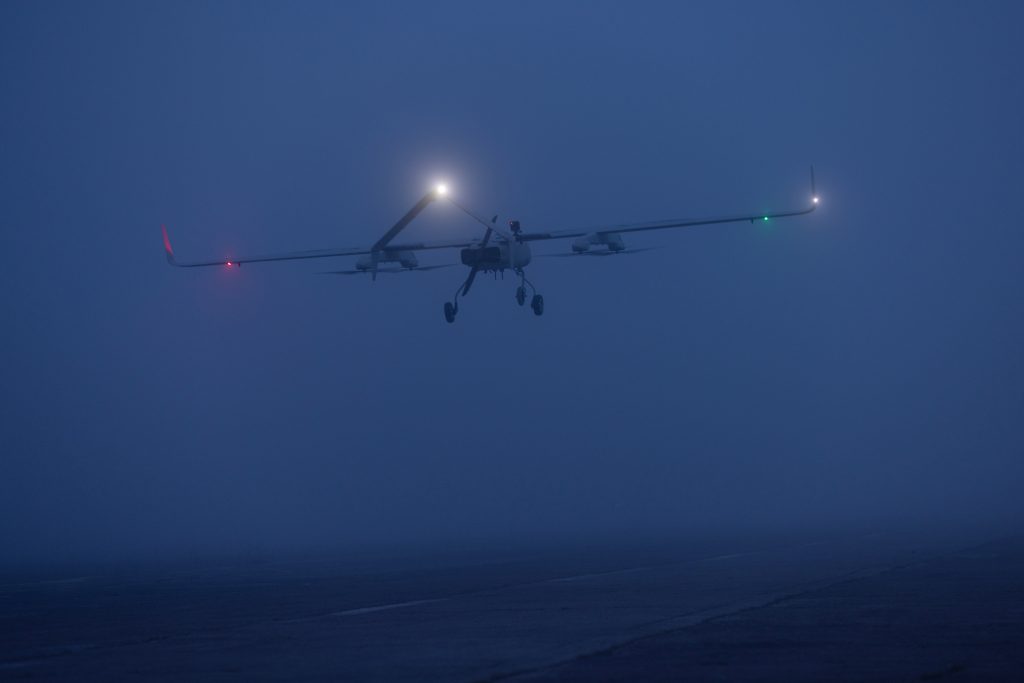
A PD-2 VTOL UAS from Ukrspecsystems takes off in heavy fog. The company’s systems have been credited with providing reconnaissance for up to 90% of Ukraine’s HIMARS strikes. Credit: Ukrspecsystems
Drone: PD-2
Description: A fixed wing VTOL aircraft manufactured in Ukraine to support long-range strikes and reconnaissance. It is proven in the face of Russian jamming and air defences, and supported the type of warfighting – the 20-40-40 approach – that the British Army aspires to.
Range: 200 km using radio frequency, and more than 1,000 km using SatCom. Comms range is stated to be unlimited using SatCom.
Altitude: Greater than 5,000 metres
Endurance: Ten hours
Weight: 55 kg depending on configuration
Payload: 11 kg, can carry EO/IR, SAR, GMTI and Munition.
Launch/Recovery: VTOL or runway configurable aircraft.
Users: Ukraine
Company brief: The company has provided thousands of strike and reconnaissance drones to the Ukrainian armed forces including the PD-2 as well as the smaller Shark, both of which have operated extensively over Russian forces. The Shark has been responsible for the reconnaissance in nine out of ten HIMARS strikes, according to Commander Chornyi Lys of the Separate Artillery Reconnaissance Brigade. The PD-2 is reported to have a relatively low radar cross section and size for its range, which means that it has proven harder to detect when on operations.
Calibre comment
There is a lot to consider with Project Corvus. Not least of them is cost, it is likely these systems will be shot down in a conventional war, so they need to be expendable. There is also the need for operator safety as Russian forces are likely adept at finding UAV crews based upon their launch location and signals that they emit. So, while one drone might be very capable, if it gives too much information away, it could reveal the location of its operators, leading to them being engaged. And, as mentioned above, if this requirement is not met with a hardy and reliable solution, the British Army will find itself struggling in the next high intensity war that it fights.
By Sam Cranny-Evans, published on 23rd May, 2025.
The featured image at the top of the article was taken by PO Rouse/UK MOD © Crown copyright 2024. It shows an M270 MLRS from the British Army firing. These systems will require a capable and well-resourced ISTAR capability to be procured under Project Corvus.

Sign Up for Updates!
Get insider news, tips, and updates. No spam, just the good stuff!



